#advice asked
Explore tagged Tumblr posts
Text
Intro post
Welcome to ask-Redditblr, your local knockoff r/askreddit blog!
You have thought-provoking questions? You need to find answers, but you are above browsing the deteriorating, capitalistically-run platform that is Reddit?
Then, this blog is for you!
All you have to do is submit your question (or you can send it as an ask IF you can’t find the “Submit a query” button). It will be published unless the post is deemed inappropriate (see rules). Those browsing the blog will do their best to either answer to the best of their abilities (or answer at all if the question calls for an opinion), reblog or tag/mention someone they believe can help you.

Here are the rules:
The “post image” option is enabled for convenience’s sake. Don’t make me regret it (this means no submitting bowluigi smut for laughs)
Please be respectful to each other
Please try to make genuine queries. Joke questions are ok, I just don’t want keysmash in my inbox.
No hate speeches (or racism, sexism, homophobia, yall get the gist)
Any post breaking one of these rules will be removed. Repeat offenders will be blocked. After what number of offenses will be at my discretion since they can vary in severity.
I can’t think of anymore rules, but I may add more if necessary.

If you have any questions or feel like making a suggestion, my askbox is open.
Here’s a list of tags available if you want to tag your posts:
#advice asked
#technology
#fandom
#science
#music
#suggestions asked
#work
#movies
#school
#shopping
#food
#opinions asked
#technology#fandom#science#music#work#movies#school#shopping#food#opinions asked#suggestions asked#advice asked
17 notes
·
View notes
Text
Writing Tips Master Post
Edit: Some posts may be deleted
Character writing/development:
Character Arcs
Making Character Profiles
Character Development
Comic Relief Arc
Internal Conflict
Character Voices
Creating Distinct Characters
Creating Likeable Characters
Writing Strong Female Characters
Writing POC Characters
Building Tension
Writing Grumpy x Sunshine Tropes
Writing Sexualities/Gender
Plot devices/development:
Intrigue in Storytelling
Enemies to Lovers
Alternatives to Killing Characters
Worldbuilding
Misdirection
Consider Before Killing Characters
Foreshadowing
Narrative:
Emphasising the Stakes
Avoid Info-Dumping
Writing Without Dialogue
1st vs. 2nd vs. 3rd Perspective
Fight Scenes (+ More)
Transitions
Pacing
Writing Prologues
Dialogue Tips
Writing War
Writing Cheating
Worldbuilding:
Worldbuilding: Questions to Consider
Creating Laws/Rules in Fantasy Worlds
Book writing:
Connected vs. Stand-Alone Series
A & B Stories
Writer resources:
Writing YouTube Channels, Podcasts, & Blogs
Online Writing Resources
Outlining/Writing/Editing Software
Writer help:
Losing Passion/Burnout
Overcoming Writer's Block
Fantasy terms:
How To Name Fantasy Races (Step-by-Step)
Naming Elemental Races
Naming Fire-Related Races
How To Name Fantasy Places
Ask games:
Character Ask Game #1
Character Ask Game #2
Character Ask Game #3
Miscellaneous:
1000 Follower Post
2000 Follower Poll
Writing Fantasy
#masterlist#masterpost#writeblr#writing#writing tips#writing advice#writing help#writing resources#author resources#writer resources#creative writing#character writing#character development#plot development#narrative#book writing#writers block#writer stuff#writer things#fantasy writing#writer ask game#deception-united
24K notes
·
View notes
Text
write unpublishable things. it's good for you.
#writeblr#from ellie#writing advice#if you have a friend who likes to write ask them to rp with u#write poems so specific no one knows what you mean#write a book longer than war and peace#write a 900k word thriller or a 40k romance or a 200k comedy#you need to do things no one is asking for#so you know it's for you to its core
17K notes
·
View notes
Text
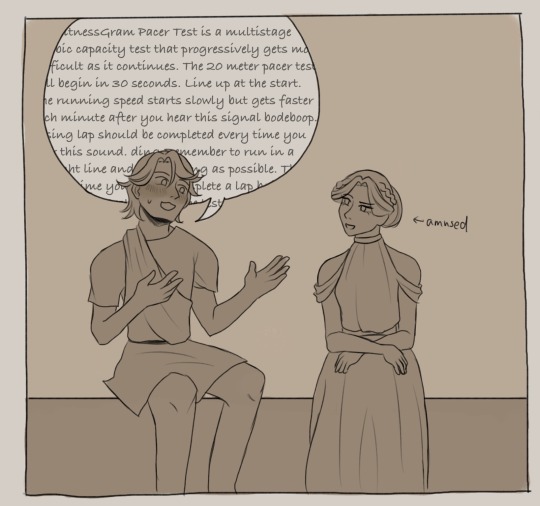
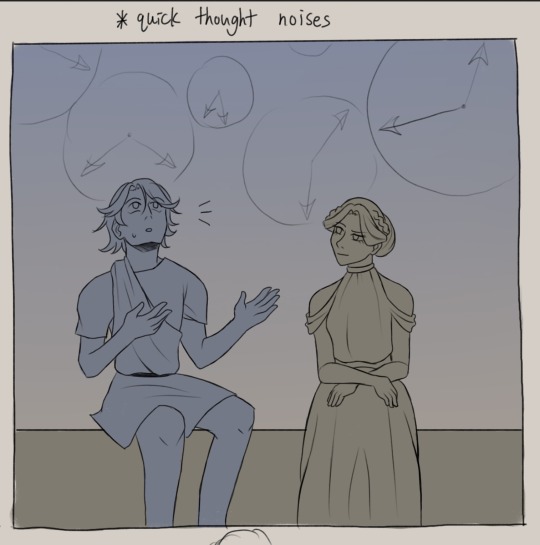
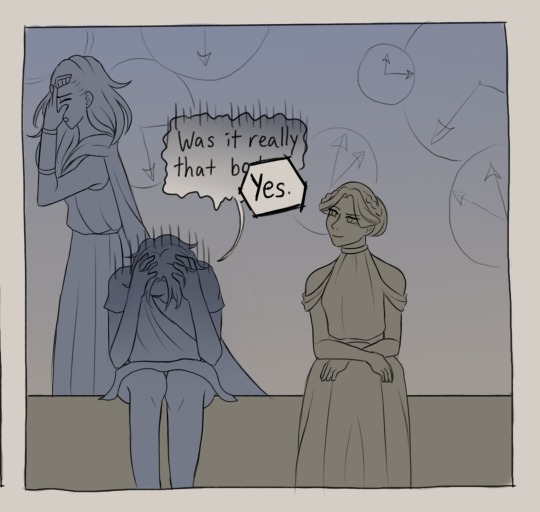
The sillies
When even Athena the Virgin goddess whose most intimate encounter was stabbing her bff thinks you’re cooked, you’re definitely cooked
#Odysseus (virgin) asking Athena (virgin goddess) for romantic advice is so funny to me#like it’s literally the blind leading the blind#I like to think even after days of strategizing with Athena ody still has 0 rizz#yes he’s trained in tactical seduction and yapping but up against someone he actually likes?#Penelope is just amused and charmed by his rizzlessness#0 rizz#epic the musical#epic odysseus#epic athena#epic penelope#odypen#fanart#xria art
9K notes
·
View notes
Text
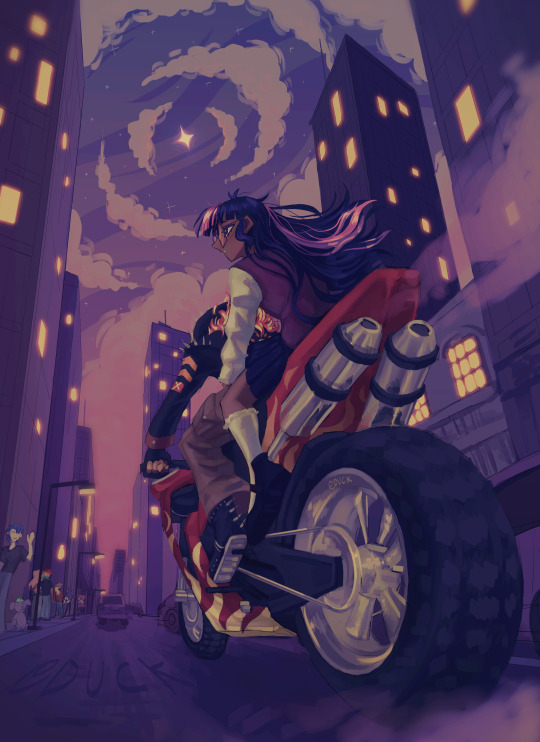
evening drive
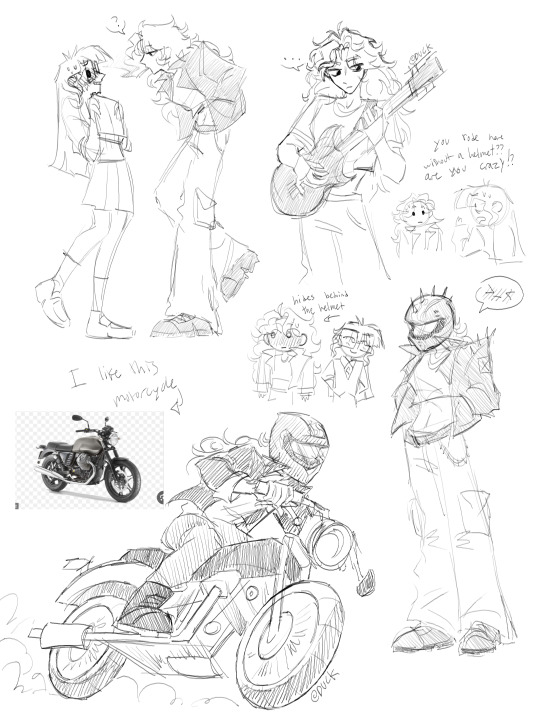
oh yes and some little doodles of them... sunset totally drives a motorcycle right?? been experimenting with how i want to draw her so maybe this'll stick idk.
#i use too much purple dont i#sciset#my art#mlp fim#mlp art#my little pony#mlp#twilight sparkle#eqg#mlp fanart#mlp eqg#equestria girls#scitwi#sci twi#mlp eg fanart#sunsetsparkle#sunset shimmer#ik the motorcycles dont match but i still havent figured out what i want hers to look like#aww lookit them they're both nerd weirdos#also thank you to the 12 different people i asked for advice when i was drawing this#3 point perspective is a pain in the.. back
3K notes
·
View notes
Text
**gently grabs your face** Listen to me.
When things are hard, move toward joy. Move toward those who light you up, like little fireflies your heart. Play the music you love. Take a chance. Make plans with people you adore—old and new. Put joy on the calendar like a goddamn holiday. (There is something to be said for making plans. I love plans. I…am a dork.)
When things are hard—and god knows, the news is full of terrible—flirt with someone you care about. Make some art about it—about everything. Bake something or cook something and if there’s too much, bring it to your neighbor. Pet a dog. Pet a cat. Find a reason to be silly. Be silly.
The brightest parts of my life, lately, have been unexpected magick. It’s there if you look, I promise. And, honestly, sometimes even if you’re not looking and you just run headlong into it. It's the connection and the love that will help see us through the hard stuff. It's the affection that feeds our strength.
#move toward joy#I know that the world is a lot#take care of you#let other people help too#advice#not that you asked
6K notes
·
View notes
Note
Dear downydig,
Any secret knowledge on how to do fluid and dynamic poses? (Btw, I love ur art!! So comfy and cozy!!!)
Sincerely, Paper-Starz

Hello hello! I have some advice! I did a thing on lines of action and the benefits of tracing in learning models a LONG time ago… the advice still holds up! Use shapes like ‘s’ curves, ‘c’ curves, and even sharper ‘U’s to give a fun fluid motion! Limbs and spine are the main help here, but the head sometimes comes into play ✌️
I have a little more to add, however! One of these pictures is my oc and the other is a king fu panda character but it’s still useful! When creating a pose, you can also use silhouette! Bonus points if the shape of the silhouette is different than the shapes that compose the character (in a way that matches the personality of course!)


4K notes
·
View notes
Text
Writing Character Accents in Fiction
Hey there, thanks for the question! I speak English as a second language; most English speakers I encounter aren’t native (yes, including fictional people); thus, this is a concern I’ve explored personally when I write.
I think the core principle regarding accent writing is this: it shouldn’t be distracting.
For the same reasons why Stephen King prescribes the basic dialogue tag “said” rather than fancier alternatives like “whispered”, “shouted” or “screeched”, dialogue must be first and foremost easy to read. It must flow like a real conversation – the pace and tone are a lot more important than how specific words are being pronounced by the character.
Focus on what effect the accent has:
Using adjectives to describe their voice in general. Different types of English (American, British, Australian, etc.) will give off a different vibe, also partly dependent on how your character speaks in general:
Lilting: Having a smooth rise and falling quality; sing-song like. Welsh accent is often described as singing.
Posh: from a high social class. This is the term generally used to describe the upper-class British accent.
Nasal: this happens when the sound goes through somebody’s nose when they’re speaking. North American accents are more nasal than, say, British pronunciations.
Brash: harsh, loud, indicative of sounding a little rude.
Slur: speaking indistinctly; words merging into one another.
Using metaphors.
Her voice was cotton and fluffy clouds.
When he spoke, the ‘r’s scratched the insides of his throat.
Mentioning their accent with a brief example(s).
“Would you like to drink some wine?” she said, though her Indian accent gave extra vibration to her ‘w’s and ‘r’s, making the words sound more like ‘vould you like to drrrink some vine’.
“I want some chocolate.” His syllables were choppy and ‘l’s rather flat, saying ‘cho-ko-lit’.
Some Tips:
Don’t phonically spell out everything. Perhaps give a few examples in the beginning, but stick to standard English spellings.
Pay attention to word choice, slang, and colloquialisms.
An Australian person would say “tram”, not “trolley; “runners” instead of “sneakers”
A Canadian may refer to a “fire hall” – what Americans call a firehouse or fire station
If your character comes from a non-Enligsh background:
Use vocabulary from other languages.
“What time was the exam, ah? Two o’clock? Jiayou!” → putting “ah” or “la” at the end of sentences + Jiayou means “break a leg” in Singlish.
“I can’t believe that 4-year-olds have their own SNS accounts now.” → “SNS” is short for “social networking service”, a term used to refer to social media in Korea. This would a subtle difference – even though it isn’t technically Korean at all!
Transpose grammar from different languages.
For example, in French, plural nouns take plural adjectives (whereas in English, you would speak of ‘white cars’, not ‘whites cars’).
─── ・ 。゚☆: *.☽ .* . ───
💎If you like my blog, buy me a coffee☕ and find me on instagram! Also, join my Tumblr writing community for some more fun.
💎Before you ask, check out my masterpost part 1 and part 2
#writers and poets#writers on tumblr#writing#helping writers#creative writing#let's write#creative writers#poets and writers#writeblr#resources for writers#ask blog#ask me anything#answered asks#writing process#writing advice#writing inspiration#writing community#writer#writerscommunity
3K notes
·
View notes
Text




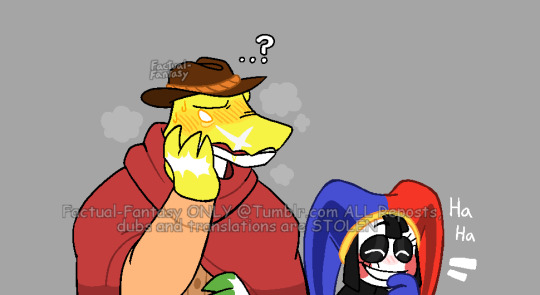
So FireAlpaca and my Tablet(?) are still riddled with problems and glitches, but I was able to find a work around the breaking problem... somewhat- 💀
So in celebration of still being able to limp along with FireAlpaca, I have drawn happy Pomni this time instead of sad! And essentially canonized Gummigoo x Pomni to my AU <XDD Its one of those veeeery rare ships that sliped through the cracks.
I'm thinking it'll be the classic case of "What is this feeling... oh its love? Well I better not tell her in case she doesn't feel the same" 💀
#my response#the amazing digital circus#A lot of people sent in asks with tech advice#I'm gonna do my best to try them all and I hope they work!#Thanks everyone! :}}
2K notes
·
View notes
Text
i'm as upset as any 10+ year old tumblr user to see the degradation of ask culture. since i've been making my own games, i get people in my notes reblogging one game regularly—weekly, daily, sometimes multiple time a day—desperate for interaction that their followers simply won't give them, even as those same followers reblog the game from them. it's awful to see people crying out for connection only to be ignored by people who can obviously hear them. it makes me sad!!! and it's frustrating!!!
but at a certain point, we have to accept that yelling about how things were 10 years ago isn't going to change people's behavior. a vast majority of tumblr users simply do not send asks, don't intend to, and will reblog ask games without sending any questions no matter how much we insist it's impolite. it's time for a new approach—so to that end:
for everyone reading this, i give you permission and highly encourage you to copy and paste my ask games (any ask game tbh) into a blank document, fill out every single question for the OCs or WIPs of your choice, and post it. without getting a single ask from anyone, share it anyway. one question at a time, everything in one giant text post, whatever. there's a good chance people who are too shy to send asks will appreciate getting to learn about your characters and stories, and maybe even encourage them to ask you for more details. and even if they don't, maybe you'll build the confidence to post whatever you want about your characters, whenever you want.
be free.
#writeblr#writing community#writeblr games#writeblr asks#writer games#writeblr tag games#OC game#oc ask game#oc meme#annika talks#my advice
2K notes
·
View notes
Text
I know we all love when writers go deep down a research rabit hole on something really specific for the sake of a fic (I certainly am not immune to doing ridiculous research into minute details for no real reason lol)
but allow me, just for a moment, to sing the praises of ✨️vagueness✨️
Unfamiliar with a city's precise geography? Be real vague.
Want a character to be a doctor but don't know how surgery works? Mention it in passing.
Character plays a sport you know nothing about? Vague it up!
You don't know what specific brand of a thing would have been popular in that time and place? Go generic baby!!
You really can just hand-wave stuff that's not where you want the focus of your story to be without anything falling apart. The audience will look where you point them, like a magic trick! If the research is stopping you up and making progress hard or frustrating you can just... not do it.
#especially for fic. save the research energy for the stuff you WANT to deep dive.#writing advice#that no one asked for lol
3K notes
·
View notes
Text
How many drafts should you go through before deciding your novel is ready?
There's no specific (official) number, but to create a foundation that ensures you don't burn out quickly, overwork yourself, and get tired of your work, I'll say four. It's the same number I use for my students since most of them have other engagements outside writing that take up a copious amount of their time.
1. Initial or Zero Draft:
This draft is also called the 'just write' draft. Focus on putting that idea down. As the creative juices flow, let it all out. Don't worry about perfection or coherence; the goal is to capture your raw ideas and get the story out of your head and onto the page.
2. Second Draft:
This is the plot draft. Read through what you have written to see if every detail you added was meant to be. Here, you focus on the structure of your story. Ensure that the plot makes sense, the pacing is right, and there are no major plot holes. This is where you might add, remove, or rearrange scenes to improve the overall flow of the narrative.
3. Third Draft:
Character development draft. In this stage, you look deeper into your characters. Make sure their motivations, backgrounds, and arcs are well-defined and consistent. Flesh out their personalities and relationships, ensuring they are compelling and believable. This is also a good time to refine dialogue and make sure it sounds natural and true to each character. That's for this drafting stage.
4. Fourth Draft:
Grammar and punctuation draft. This is the polishing stage. Focus on correcting grammatical errors, punctuation, and spelling mistakes. Pay attention to sentence structure, word choice, and overall readability. This draft is about making your manuscript as clean and professional as possible.
Keep in mind that the goal is to define what completion means for each draft. Once you reach the goal, take a break and return to it for the next drafting stage.
Some writers pay people to carry out some of the drafting stages for them, so if you fall into that category, you might have fewer drafting stages to handle yourself!
Reblog to save for later 😉
Thank you all for the support 💜!
#writing#writeblr#writers on tumblr#writer#writers and poets#writerscommunity#writing community#wattpad#ao3 writer#a03 writer#on writing#writing stuff#creative writing#writing tips#writers#my writing#writing things#writing strategies#writing struggles#writing stories#writing style#story writing#writing advice#writing asks#writing and poetry#writing a book#writing about writing#writing blog#writing challenge#writing discord
2K notes
·
View notes
Text
Fantasy Guide to Building A Culture
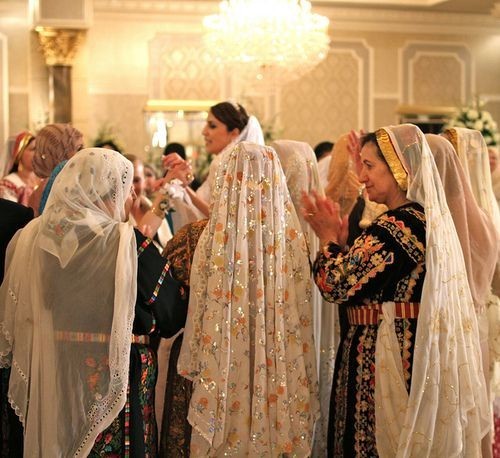
Culture is defined by a collection of morals, ethics, traditions, customs and behaviours shared by a group of people.
Hierarchy and Social Structures
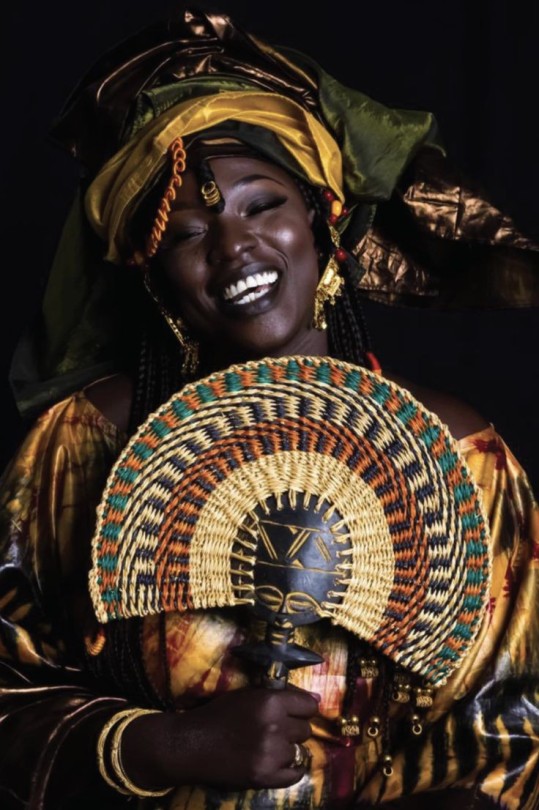
Within every culture, there is a hierarchy. Hierarchies are an important part of any culture, usually do ingrained that one within the culture wouldn't even question it. Hierarchy can be established either by age, gender or wealth and could even determine roles within their society. Sometimes hierarchy can may be oppressive and rigid whilst other times, ranks can intermingle without trouble. You should consider how these different ranks interact with one another and whether there are any special gestures or acts of deference one must pay to those higher than them. For example, the Khasi people of Meghalaya (Northern India), are strictly matrillineal. Women run the households, inheritance runs through the female line, and the men of the culture typically defer to their mothers and wives. Here are a few questions to consider:
How is a leader determined within the culture as a whole and the family unit?
Is the culture matriarchal? Patriarchal? Or does gender even matter?
How would one recognise the different ranks?
How would one act around somebody higher ranking? How would somebody he expected to act around somebody lower ranking?
Can one move socially? If not, why? If so, how?
Traditions and Customs
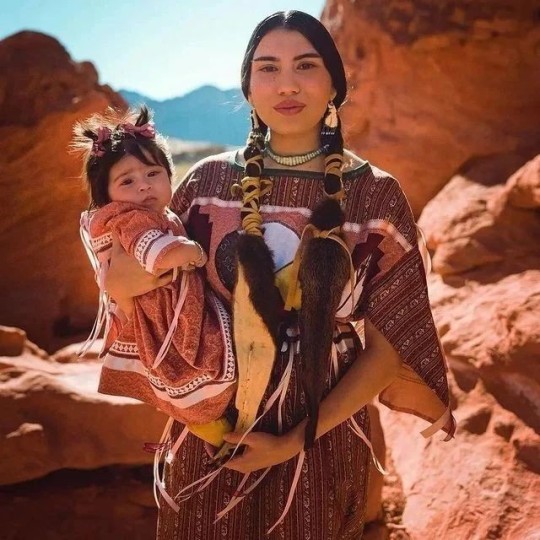
Traditions are a staple in any culture. These can be gestures or living life a certain way or to the way a certain person should look. Traditions are a personal detail to culture, they are what make it important. Tradition can dictate how one should keep their home, run their family, take care of their appearance, act in public and even determine relationship. Tradition can also be a double edged sword. Traditions can also be restrictive and allow a culture to push away a former member if they do not adhere to them, eg Traditional expectations of chastity led to thousands of Irish women being imprisoned at the Magdelene Laundries. Customs could be anything from how one treats another, to how they greet someone.
How important is tradition?
What are some rituals your culture undertakes?
What are some traditional values in your world? Does it effect daily life?
Are there any traditions that determine one's status?
Values and Opinions
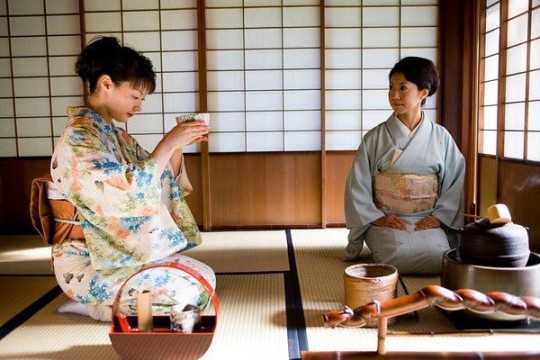
Values and Opinions are the bread and butter of any culture. This is the way your culture sees the world and how they approach different life hurdles. These may differ with other cultures and be considered odd to outsiders, what one culture may value another may not and what opinion another holds, one may not. There will be historical and traditional reasons to why these values and opinions are held. Cultures usually have a paragon to which they hold their members to, a list of characteristics that they expect one to if not adhere to then aspire to. The Yoruba people value honesty, hard work, courage and integrity. Here are some questions to consider?
How important are these ethics and core values? Could somebody be ostracised for not living up to them?
What are some morals that clash with other cultures?
What does your culture precieved to be right? Or wrong?
What are some opinions that are considered to be taboo in your culture? Why?
Dress Code
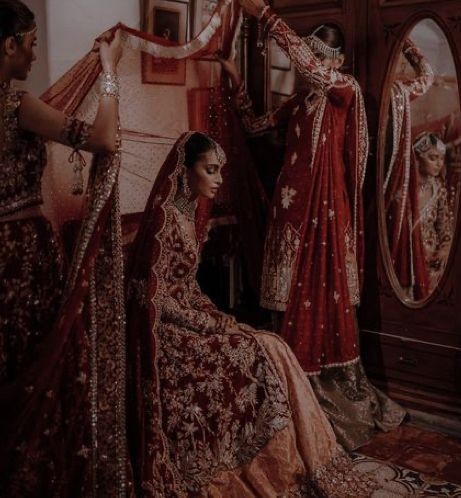
For many cultures, the way somebody dresses can be important. History and ethics can effect how one is meant to be dressed such as an expectation of chastity, can impose strict modesty. While other cultures, put more importance on details, the different sorts of clothes worn and when or what colour one might wear. The Palestinian people (من النهر إلى البحر ، قد يكونون أحرارا) denoted different family ties, marriage status and wealth by the embroidery and detailing on their thoub.
Are there traditional clothes for your world? Are they something somebody wears on a daily basis or just on occasion?
Are there any rules around what people can wear?
What would be considered formal dress? Casual dress?
What would happen if somebody wore the wrong clothes to an event?
Language

Language can also be ingrained as part of a Culture. It can be a specific way one speaks or a an entirely different language. For example, in the Southern States of America, one can engage in a sort of double talk, saying something that sounds sweet whilst delivering something pointed. Bless their heart. I have a post on creating your own language here.
Arts, Music and Craft

Many cultures are known for different styles of dance, their artwork and crafts. Art is a great part of culture, a way for people to express themselves and their culture in art form. Dance can be an integral part of culture, such as céilí dance in Ireland or the Polka in the Czech Republic. Handicrafts could also be important in culture, such as knitting in Scottish culture and Hebron glass in Palestine. Music is also close to culture, from traditional kinds of singing such as the White Voice in Ukraine and the playing of certain instruments such as the mvet.
Food and Diet
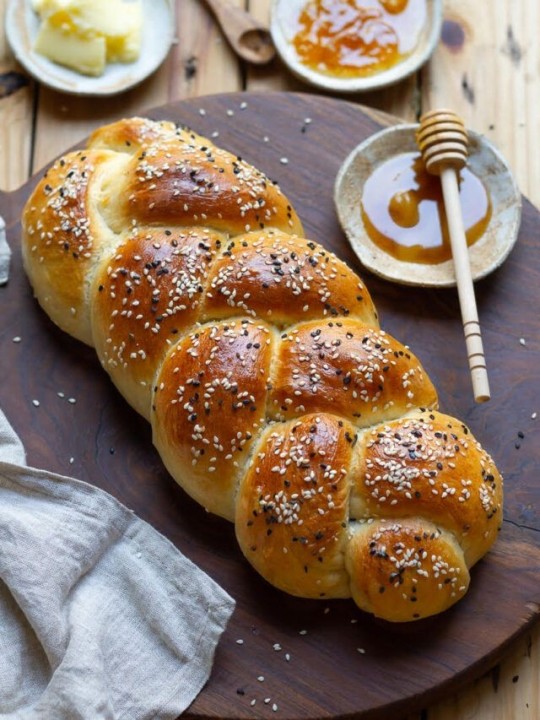
The way a culture prepares or intakes or treats certain foods are important to a culture. In some cultures, there is a diet yo adhere to, certain foods are completely banned. With Jewish culture, pork is prohibited along with fish such as sturgeon, along with shellfish and certain fowl. Meat must also be prepared in a certain way and animal byproducts such as dairy, must never be created or even eaten around this meat. This is known as kosher. The way one consumes food is also important to culture. In some cultures, only certain people may eat together. Some cultures place important on how food is eaten. In Nigerian culture, the oldest guests are served first usually the men before the women. In Japanese culture, one must say 'itadakimasu' (I recieve) before eating. Culture may also include fasting, periods of time one doesn't intake food for a specific reason.
What are some traditional dishes in your world?
What would be a basic diet for the common man?
What's considered a delicacy?
Is there a societal difference in diet? What are the factors that effect diet between classes?
Is there any influence from other cuisines? If not, why not? If so, to what extent?
What would a typical breakfast contain?
What meals are served during the day?
What's considered a comfort food or drink?
Are there any restrictions on who can eat what or when?
Are there any banned foods?
What stance does your world take on alcohol? Is it legal? Can anybody consume it?
Are there any dining customs? Are traditions?
Is there a difference in formal meals or casual meals? If so, what's involved?
Are there any gestures or actions unacceptable at the dinner table?
How are guests treated at meals? If they are given deference, how so?
#Fantasy Guide to Building A Culture#As promised#If I fail my German exam I'm blaming ye#Culture#Building a culture#Fantasy Guide#WorldBuilding#WorldBuilding guide#WorldBuilding help#Writing help#writing#writeblr#writing resources#writing reference#writing advice#ask answered questions#writers#writing advice writing resources#spilled ink#ask answered
10K notes
·
View notes
Text
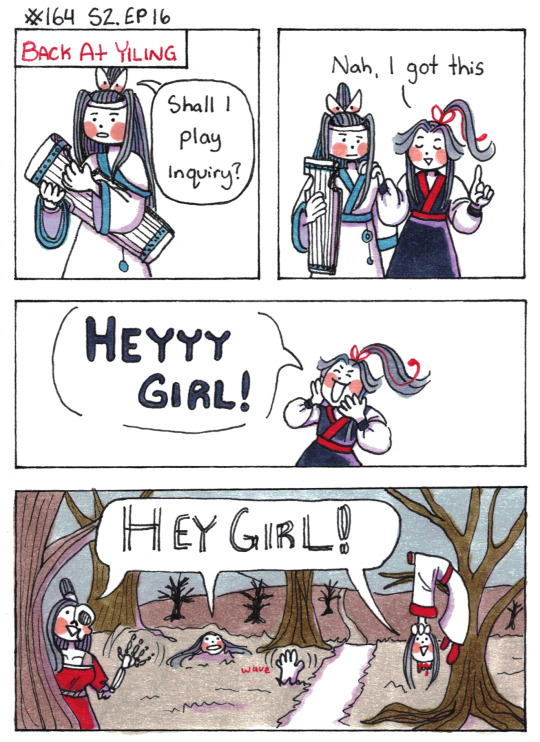
The girls are back (from the grave)
[First] Prev <–-> Next
#poorly drawn mdzs#mdzs#wei wuxian#lan wangji#Not sure there is a tag for the ghost girls...The Yiling sorority sisters. The girly greek chorus. You'll always be in our hearts.#I love how this scene echoes back to yi city (sizhui asking if it's time to play inquiry but WWX goes with empathy)#it shows how deeply enmeshed he is with spirits! He calls and they respond. They are familiar - if not old friends.#I am such a sucker for necromancer characters (it's how this series got my interest in the first place)#So I'm always thrilled when WWX gets to play the part! Let him be more comfortable with the dead than the living!#He's the guy who calls upon bloody mary in the bathroom mirror just to ask a quick history question or advice on his outfit.#He wanders into the graveyard and shouts for the girls and the girls shout back.#Grave yard? More like a RAVE yard! Let's go girls!
3K notes
·
View notes
Note
advice for a character who grips control like a lifeline. who wants to be in charge of every little thing because whenever they're not in control of something something bad could happen. has happened. they can't let a single variable be wild or in someone else's hands
How to Write a Controlling Character
Backstory Rooted in Trauma or Guilt
This character likely has a history that has ingrained the belief that they must be in control or face devastating consequences. Perhaps they once trusted someone else with something crucial—a promise, a responsibility, or a life-altering choice—and that trust was broken in a way that had lasting repercussions. For example, maybe they lost someone because they weren’t “careful enough,” or they experienced a betrayal when they trusted another person’s plan.
They might frequently flash back to this moment, possibly catching themselves thinking, If only I’d been the one in control, this wouldn’t have happened. This memory fuels their need to keep a tight grip on everything, especially if they’re in high-stakes situations.
Rigid Daily Routines and Habits
This character’s day is probably packed with small rituals and routines that give them a sense of security. From double-checking door locks to setting multiple alarms, they rely on routines to give themselves a sense of order. In fact, they might be nearly ritualistic about small actions—checking emails three times before sending, never leaving a task halfway finished, or meticulously arranging their workspace.
Even something as simple as making coffee can become a precise process. If someone moves one of their tools or a file from their desk, they may feel a spike of frustration or even anxiety, seeing it as a disruption to their personal “system.” They could feel that control in their daily life is the only thing keeping chaos at bay.
Intensely Observant of Details and Mistakes
They are hyperaware of mistakes or inefficiencies in others, mentally cataloging things like a coworker’s slight lateness or a friend’s disorganization. They may feel a sense of superiority (or frustration) over people who don’t “have it together” and take it upon themselves to organize or “fix” things for others.
In conversation, they might cut people off or “correct” them even over small points, often justifying this to themselves as necessary. For instance, if someone shares a plan that seems half-formed, this character could immediately dive in, pointing out potential problems or filling in details.
Controlling Relationships and Social Situations
This character struggles in relationships where they aren’t the dominant or organizing force. They might instinctively take over when making plans with friends, micromanaging even casual hangouts to make sure everything goes “right.” For example, they might pick the restaurant, plan the travel route, and check weather forecasts—assuming that if they don’t, no one else will think of these things.
When someone resists their attempts at control, they can respond defensively, often turning cold or resentful, unable to understand why anyone wouldn’t want them to manage the situation. Statements like, “Fine, but don’t blame me if this doesn’t go well,” are frequent in their interactions.
Extreme Anxiety or Panic When Control Is Taken Away
When things go beyond their reach, this character might experience panic, as if they’re suddenly powerless. For instance, if an unexpected roadblock prevents them from handling a task (like a canceled flight they needed to board, or a plan that falls apart), they might spend hours trying to regain control, calling every contact or frantically exploring alternatives.
Their reaction may feel extreme to others. Even minor setbacks—such as a colleague taking initiative on a project or a friend planning something without consulting them—can trigger a disproportionate response, like clenching their fists, pacing, or silently stewing as they feel the situation “slipping.”
Inability to Accept Help or Collaboration
Their controlling nature makes it hard for them to collaborate, as they believe their methods are the only ones that work. For them, accepting help feels like an admission of weakness or failure, so they rarely delegate or ask for assistance. If they do reluctantly accept help, they are constantly supervising or “suggesting” things, making it feel more like they’re still in charge.
In a team setting, they might take on all the major tasks, either out of distrust in others’ abilities or a feeling that no one will match their standards. Their motto could be something like, “If you want something done right, do it yourself,” even if that means working late or burning out.
Reluctance to Show Vulnerability or Need
Since vulnerability and control rarely coexist for them, they avoid showing weakness at all costs, preferring to mask stress or struggles as “just part of the job.” If they do become overwhelmed, they’re more likely to shut people out, saying, “I’ve got it handled,” even if it’s far from true.
When people push them to let go or share the load, they might lash out, accusing others of “just not understanding.” They often see their intense responsibility as a form of sacrifice, justifying their behavior with, “If I don’t handle this, who will?”
#creative writing#writeblr#ask box prompts#how to write a controlling character#how to write#writing tips#writing advice#writing resources#writing help#writing reference#writing prompts#how to#writing tools#writing techniques#writing stuff
2K notes
·
View notes